Covid-19 Tip: Five Things to Focus on After a Long Break From the Pool
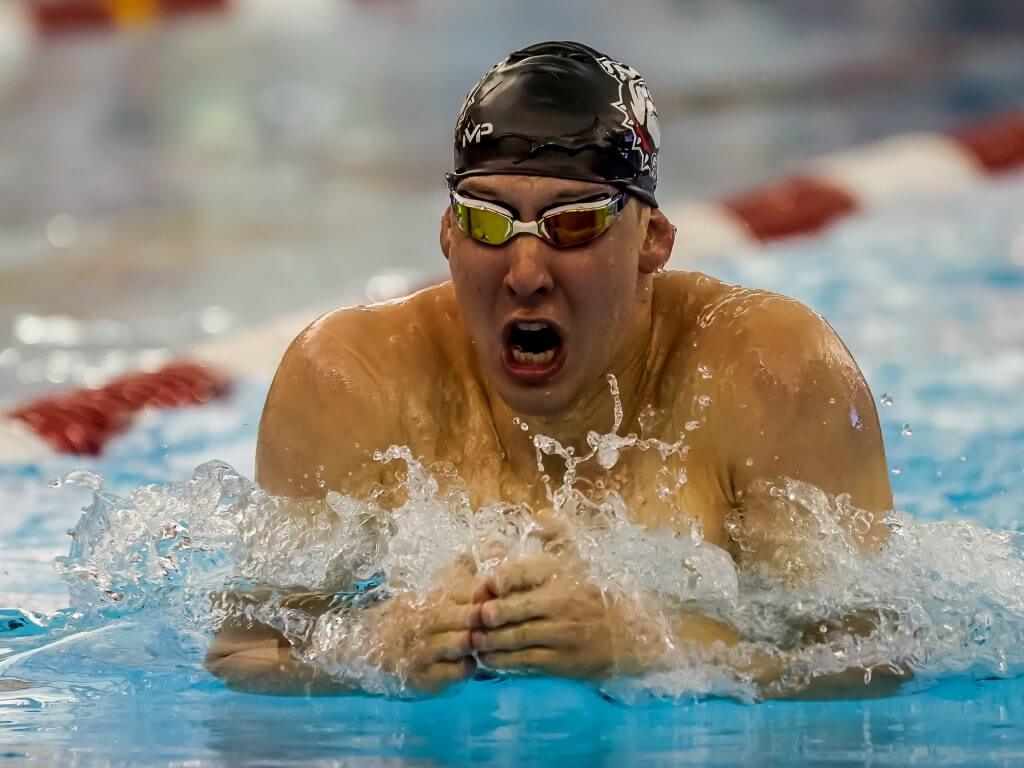
Covid-19: Five Things to Focus on After a Long Break From the Pool
When this article was written a few years ago, no one thought the world would be hit by the coronavirus pandemic. If swimmers had to stay out of the water, it was on a case-by-case basis, not the blanket situation that – at one point – affected all athletes, and still dictates what some swimmers can do. With swimmers back in the flow, or itching to return to the water, here are some points to keep in mind when getting back in the swim.
By Jason Tillotson, Swimming World College Intern.
Taking breaks from the pool can be necessary during certain parts of the year, like the holidays or for family vacations. Some breaks are unavoidable, such as when one gets injured and is forced or advised to take some time away from the black line. More often than not, those breaks are enjoyable – no early morning practice, weight lifting sessions or dryland training to adhere to. The difficulty is always getting back in the water. The process can be difficult and frustrating at times, so here are five key things to focus on upon your return to the pool.
Freestyle Head Position
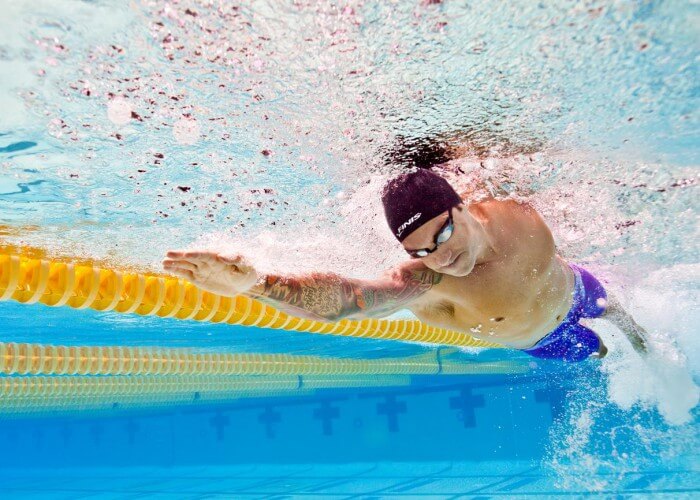
Photo Courtesy: FINIS
Often times, no matter who you are or what stroke you specialize in, freestyle is the stroke we swim the most in workouts. It is used in warmup and cool down sets, along with being sprinkled into some main sets. With that, it is imperative that after a break, you spend a great deal of energy on getting your freestyle back in fighting shape. The easiest way to do so is to make sure your head is in the right position. Many times, when we lose feel for the water, we become unbalanced, when we become unbalanced we tend to try and compensate for it by lifting our heads when we swim and breath. It is our brain’s way of keeping us from drowning. So how do you fix this? By keeping your eyes glued to the bottom of the pool. This will naturally bring your hips and feet closer to the surface of the water, creating less drag and allowing you to swim faster, with less effort. A quick demonstration of this can be found here.
Sculling
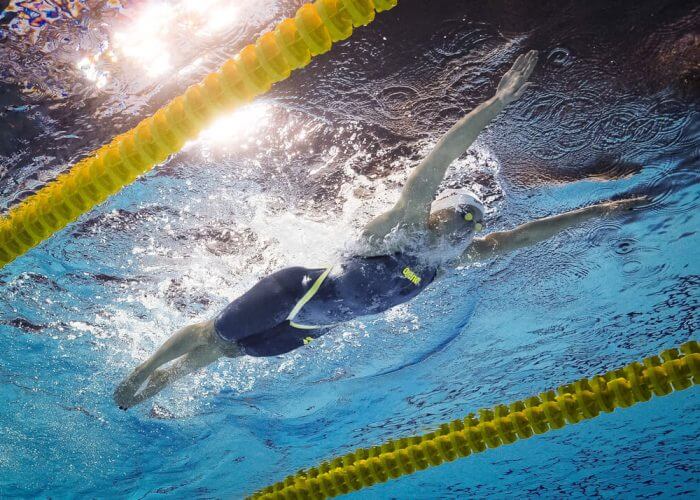
Photo Courtesy: R-Sport / MIA Rossiya Segodnya
When we take a significant amount of time out of the water, the first thing to go is our feel for the water; a strange yet essential concept to swimming at any speed. When we don’t “feel” the water well, we cannot swim fast. Sculling allows us to slow down the motion of feeling the water and pay attention to where we can feel the most amount of water at different points in our stroke. Here is a video that explains sculling in a simple, straightforward way.
Underwater Dolphin Kick
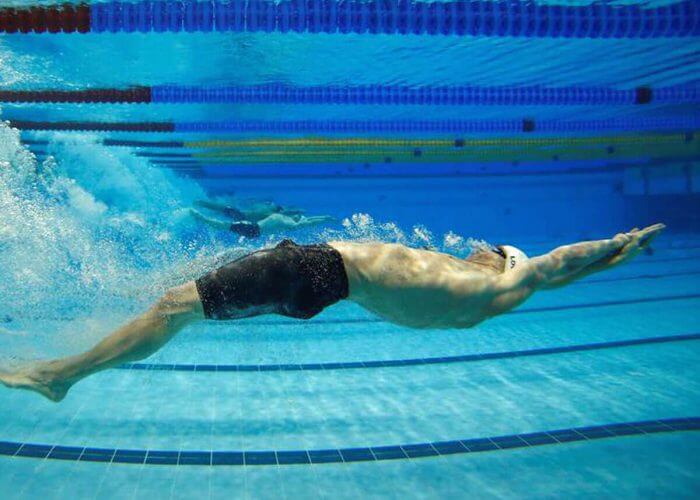
Photo Courtesy: FINA Doha 2014
After taking a long break, it can be very hard to hold your breath long enough to take more than just one or two (if any, let’s be honest) dolphin kicks off each wall, especially in a short course pool. Paying attention and committing to taking several dolphin kicks off each wall will not only build your aerobic base faster but it will also ensure that you don’t lose that skill. Underwater dolphin kick is often referred to as the fifth stroke and, just like any other stroke, it can come and go without diligent practice. Gary Hall Sr. of The Race Club, does a fantastic job of explaining the technique and importance of the underwater dolphin kick in this short video.
Quality vs. Quantity
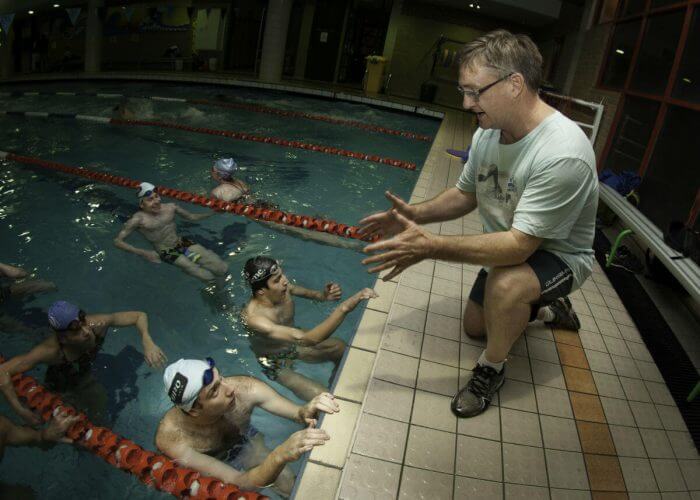
Photo Courtesy: Wayne Goldsmith
While this is a mindset we should always have, it is especially important when coming off a long time away from the pool. Just like the tips mentioned above, it is crucial that we focus on the technical aspect of our strokes and turns before trying to take on a heavy amount of yardage. A way to incorporate this into your personal training regime could be to try only doing a single swim workout a day, while adding in some dry land, in order to not overload your body with more than it can handle.
Patience
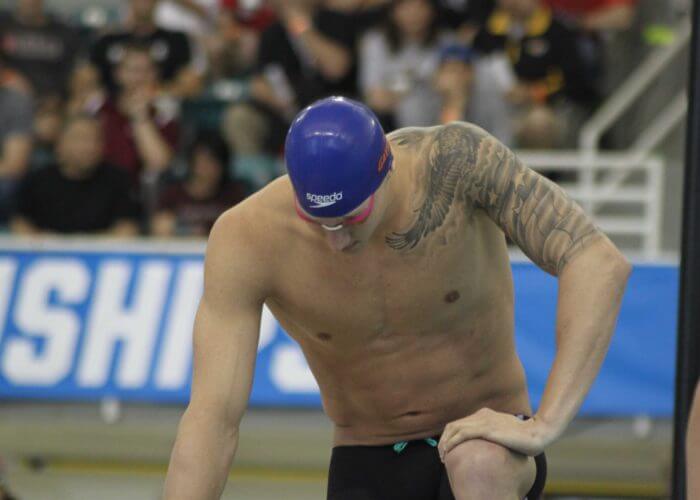
Photo Courtesy: Andy Ringgold / Aringo Photos
As the itchy competitors we all are this trait is hard to come by. However, being patient is the key to overcoming the frustration of not being able to do what you used to be able to do pre-vacation. You may think that as more time goes on, and the more you swim, the quicker you will be able to get back where you were and swim as fast as you were able to. While there is some truth to that, it is difficult for the body to adjust to swimming fast after being back in the water a short time. This is true because your body temporarily forgets how to process glycogen and dispel lactic acid. It takes time for the body to get used to completing these natural processes, as efficiently as it used to be able to, when you were in tip-top shape.
It is often assumed that for every one week you take away from the pool, it takes one week to get back to where you were. This is actually a fallacy. The more accurate rule of thumb essentially forces us to take double the time we have taken away from the pool to get back in fighting shape (one week out = two weeks in, etc.). The most important thing when coming back from a break is to be patient and remember what your long-term goals are. This can help ease the process and make each day more purposeful.
All commentaries are the opinion of the author and do not necessarily reflect the views of Swimming World Magazine nor its staff.




Oh, for real?
Deirdre Morris Perth could be a long time before I get back in shape ???
Ashleigh Botha
Kerry Walsh
Great Read!
Chris Moralez Derrick Mauk
How about a BLM tip
Really!?!
Chesleigh Marc Lee
Isaac Lee
Almost 3 Mo. I need a lifebelt, already
Kolin Fadden read this.